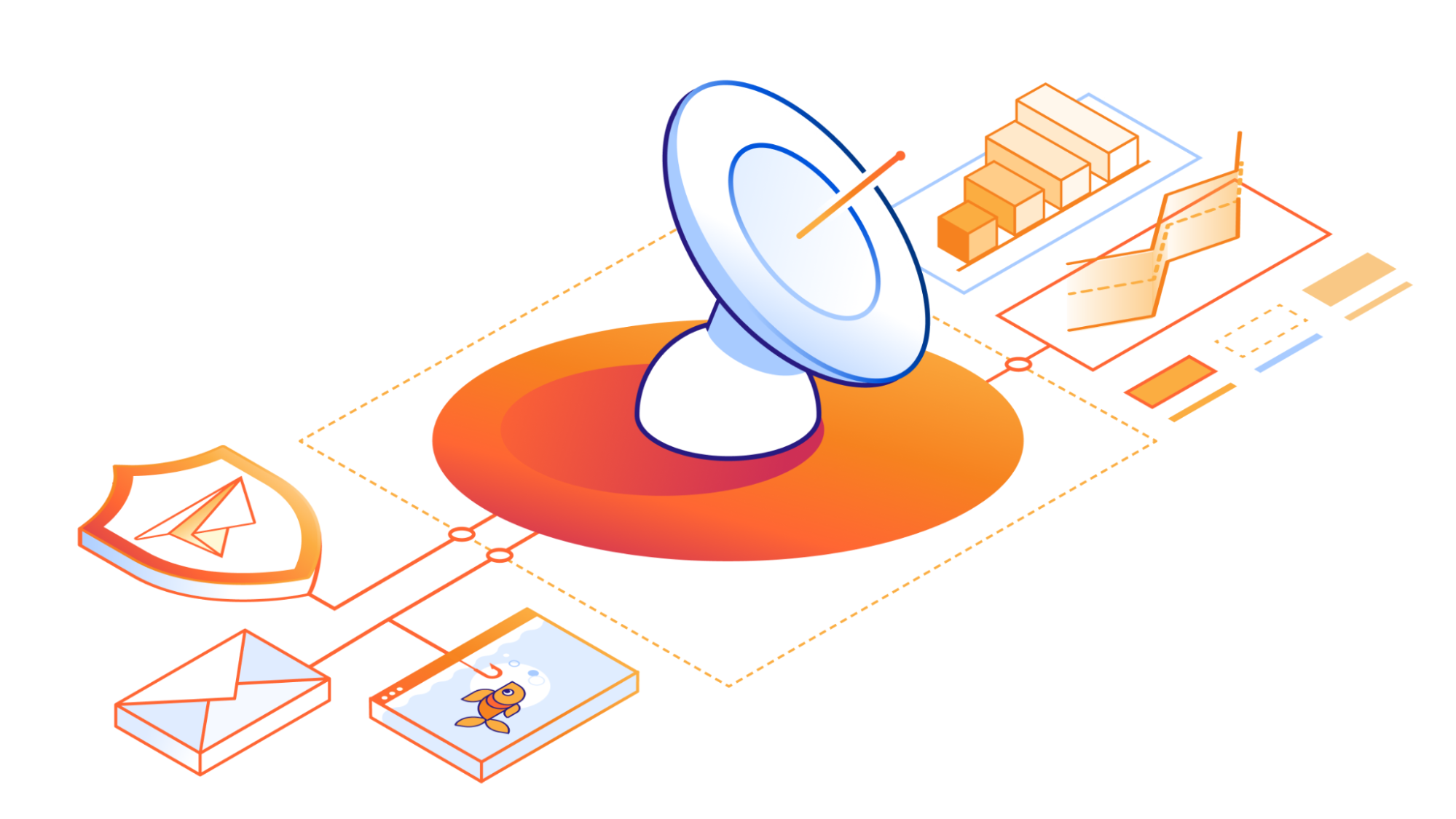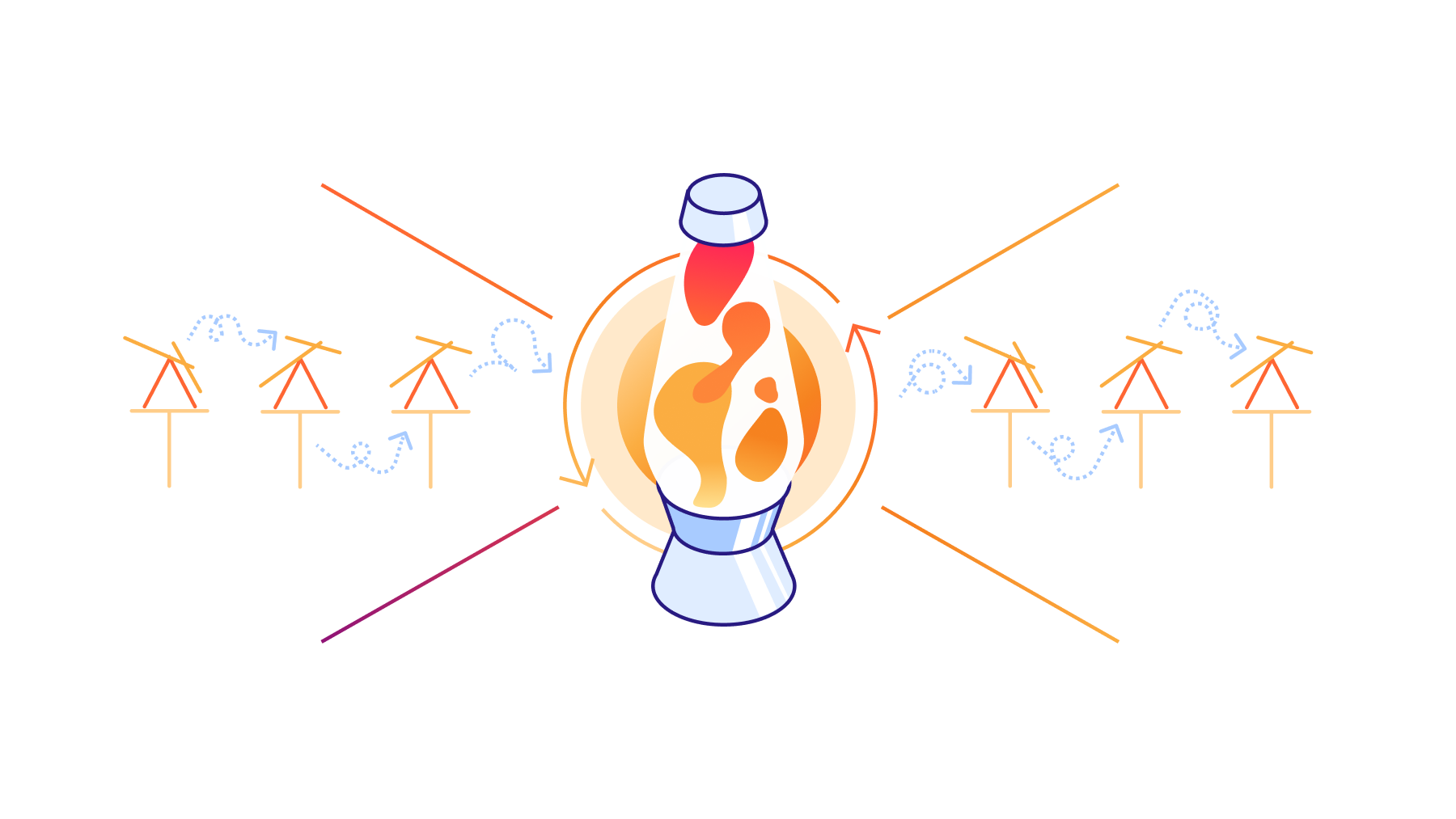Worth Exploring: PCAP Analysis with Generative AI
John Capobianco published the source code of his Packet Buddy application on GitHub. It’s a Python UI that takes a PCAP file, converts it to JSON, and includes that JSON as part of the ChatGPT chat, allowing you to discuss the captured packets with ChatGPT.
His idea is one of the best uses of generative AI in networking I’ve seen so far, as long as you remember that you’re dealing with an overconfident intern who has no problem making up an answer just to sound smart. Have fun!
Finally, if you don’t want to use ChatGPT (I wouldn’t blame you) or send captured data into The Cloud, someone already adapted his idea to use local LLMs.
Hedge 216: Automation Success Stories
One thing we often hear about automation is that its hard because there are so many different interfaces. On this episode of the Hedge, Daniel Teycheney joins Ethan Banks and Russ White to discuss how they started from a simple idea and ended up building an automation system that does cross vendor boundaries within a larger discussion about automation and APIs.
HN724: How Packets Move Through a Network Device
Today we metaphorically pop open the hood of switches and routers, taking a look at the mechanics of how they work. We cover the three states: configuration, operational, and forwarding. We talk RIB and FIB, along with CAM, TCAM, and MPLS. We also cover line rate, port-to-port latency, and buffers. Whether it’s been awhile since... Read more »Now’s the Time to Optimize Cloud Costs: Here’s How
By choosing the right cloud at the right time, adjusting one’s cloud strategy as needed, and factoring in hidden fees, businesses have the best chance at optimizing cloud costs effectively.Protocol detection with Cloudflare Gateway

Cloudflare Gateway, our secure web gateway (SWG), now supports the detection, logging, and filtering of network protocols regardless of their source or destination port. Protocol detection makes it easier to set precise policies without having to rely on the well known port and without the risk of over/under-filtering activity that could disrupt your users’ work. For example, you can filter all SSH traffic on your network by simply choosing the protocol.
Today, protocol detection is available to any Enterprise user of Gateway and supports a growing list of protocols including HTTP, HTTPS, SSH, TLS, DCE/RPC, MQTT, and TPKT.
Why is this needed?
As many configuration planes move to using RESTful APIs, and now even GraphQL, there is still a need to manage devices via protocols like SSH. Whether it is the only management protocol available on a new third party device, or one of the first ways we learned to connect to and manage a server, SSH is still extensively used.
With other legacy SWG and firewall tools, the process of blocking traffic by specifying only the well known port number (for example, port 22 for SSH) can be both insecure and inconvenient. For example, if you used SSH Continue reading
Launching email security insights on Cloudflare Radar

During 2021's Birthday Week, we announced our Email Routing service, which allows users to direct different types of email messages (such as marketing, transactional, or administrative) to separate accounts based on criteria such as the recipient’s address or department. Its capabilities and the volume of messages routed have grown significantly since launch.
Just a few months later, on February 23, 2022, we announced our intent to acquire Area 1 Security to protect users from phishing attacks in email, web, and network environments. Since the completion of the acquisition on April 1, 2022, Area 1's email security capabilities have been integrated into Cloudflare's secure access service edge (SASE) solution portfolio, and now processes tens of millions of messages daily.
Processing millions of email messages each day on behalf of our customers gives us a unique perspective on the threats posed by malicious emails, spam volume, the adoption of email authentication methods like SPF, DMARC, and DKIM, and the use of IPv4/IPv6 and TLS by email servers. Today, we are launching a new Email Security section on Cloudflare Radar to share these perspectives with you. The insights in this new section can help you better understand the state of email security Continue reading
Network performance update: Security Week 2024

We constantly measure our own network’s performance against other networks, look for ways to improve our performance compared to them, and share the results of our efforts. Since June 2021, we’ve been sharing benchmarking results we’ve run against other networks to see how we compare.
In this post we are going to share the most recent updates since our last post in September, and talk about how we are getting as fast as we are.
How we stack up
Since June 2021, we’ve been taking a close look at the most reported eyeball-facing ISPs and taking actions for the specific networks where we have some room for improvement. Cloudflare was already the fastest provider for TCP Connection time at the 95th percentile for 44% of the networks around the world (we define a network as country and AS number pair). We chose this metric to show how our network helps make your websites faster by getting you to where your customers are. Taking a look at the numbers, in July 2022, Cloudflare was ranked #1 in 33% of the networks and was within 2 ms (95th percentile TCP Connection Time) or 5% of the #1 provider for Continue reading
Harnessing chaos in Cloudflare offices

In the children’s book The Snail and Whale, after an unexpectedly far-flung adventure, the principal character returns to declarations of “How time’s flown” and “Haven’t you grown?” It has been about four years since we last wrote about LavaRand and during that time the story of how Cloudflare uses physical sources of entropy to add to the security of the Internet has continued to travel and be a source of interest to many. What was initially just a single species of physical entropy source – lava lamps – has grown and diversified. We want to catch you up a little on the story of LavaRand. This blog post will cover the new sources of “chaos” that have been added to LavaRand and how you can make use of that harnessed chaos in your next application. We’ll cover how public randomness can open up uses of publicly trusted randomness — imagine not needing to take the holders of a “random draw” at their word when they claim the outcome is not manipulated in some way. And finally we’ll discuss timelock encryption which is a way to ensure that a message cannot be decrypted until some chosen time in the Continue reading
Log Explorer: monitor security events without third-party storage

Today, we are excited to announce beta availability of Log Explorer, which allows you to investigate your HTTP and Security Event logs directly from the Cloudflare Dashboard. Log Explorer is an extension of Security Analytics, giving you the ability to review related raw logs. You can analyze, investigate, and monitor for security attacks natively within the Cloudflare Dashboard, reducing time to resolution and overall cost of ownership by eliminating the need to forward logs to third party security analysis tools.
Background
Security Analytics enables you to analyze all of your HTTP traffic in one place, giving you the security lens you need to identify and act upon what matters most: potentially malicious traffic that has not been mitigated. Security Analytics includes built-in views such as top statistics and in-context quick filters on an intuitive page layout that enables rapid exploration and validation.
In order to power our rich analytics dashboards with fast query performance, we implemented data sampling using Adaptive Bit Rate (ABR) analytics. This is a great fit for providing high level aggregate views of the data. However, we received feedback from many Security Analytics power users that sometimes they need access to a more granular view Continue reading
Introducing Requests for Information (RFIs) and Priority Intelligence Requirements (PIRs) for threat intelligence teams

Cloudforce One is our threat operations and research team. Its primary objective: track and disrupt threat actors targeting Cloudflare and the customer systems we protect. Cloudforce One customers can engage directly with analysts on the team to help understand and stop the specific threats targeting them.
Today, we are releasing in general availability two new tools that will help Cloudforce One customers get the best value out of the service by helping us prioritize and organize the information that matters most to them: Requests for Information (RFIs) and Priority Intelligence Requirements (PIRs). We’d also like to review how we’ve used the Cloudflare Workers and Pages platform to build our internal pipeline to not only perform investigations on behalf of our customers, but conduct our own internal investigations of the threats and attackers we track.
What are Requests for Information (RFIs)?
RFIs are designed to streamline the process of accessing critical intelligence. They provide an avenue for users to submit specific queries and requests directly into Cloudforce One's analysis queue. Essentially, they are a well-structured way for you to tell the team what to focus their research on to best support your security posture.
Each RFI filed is routed to an Continue reading
Cloudflare’s URL Scanner, new features, and the story of how we built it

Today, we’re excited to talk about URL Scanner, a tool that helps everyone from security teams to everyday users to detect and safeguard against malicious websites by scanning and analyzing them. URL Scanner has executed almost a million scans since its launch last March on Cloudflare Radar, driving us to continuously innovate and enhance its capabilities. Since that time, we have introduced unlisted scans, detailed malicious verdicts, enriched search functionality, and now, integration with Security Center and an official API, all built upon the robust foundation of Cloudflare Workers, Durable Objects, and the Browser Rendering API.
Integration with the Security Center in the Cloudflare Dashboard
Security Center is the single place in the Cloudflare Dashboard to map your attack surface, identify potential security risks, and mitigate risks with a few clicks. Its users can now access the URL scanner directly from the Investigate Portal, enhancing their cybersecurity workflow. These scans will be unlisted by default, ensuring privacy while facilitating a deep dive into website security. Users will be able to see their historic scans and access the related reports when they need to, and they will benefit from automatic screenshots for multiple screen sizes, enriching Continue reading
DMVPN Videos Are Free to Download
It looks like DMVPN is still kicking; every other blue moon, I get a “Thank you” note from someone figuring out the DMVPN details from my first DMVPN webinar, so I decided to make those videos public. You can watch any video from the DMVPN Technology and Configuration without registration.
A tangential note in case you’re wondering how “easy” it is to refurbish old stuff:
- The webinar was recorded as a WebEx ARF recording.
- The WebEx MP4 exporter I used when trying to generate videos from my old ARF files was broken and couldn’t produce usable videos after a long silence (I muted the microphone during a coffee break). I gave up at that time
- A few weeks ago, I decided to replay the recording and create videos from the screen capture.
- Finally, it took my audio editor quite a while to make the sound recorded with 8-bit 8 kHz codec (thank you, WebEx) sound better than Apollo 11 communications with Houston.
How to Securely Access Customer Networks With BYOC
As the need to manage data privacy, sovereignty, control, and cost grows, more Bring Your Own Cloud (BYOC) use cases will emerge.What’s new in Calico – Spring 2024
Last quarter we announced Calico Cloud’s ‘Cluster Security Score’ feature as part of cluster security posture management. Today, we are excited to announce product and user experience improvements and better user experience for the Calico platform. This blog covers all major updates including VXLAN-based cluster mesh networking, advanced observability and troubleshooting features, improved support for Windows-based containers, third-party integration using webhooks, and enhanced egress gateway high-availability.
By leveraging these new features, organizations can streamline their Kubernetes cluster management, enhance network visibility, and ensure reliable connectivity and security for their applications across clusters.
Enhanced cluster mesh implementation
Kubernetes does not natively support inter-cluster pod to pod communication. While routable IPs is a way to solve this, it requires changes to the underlying network which is both challenging and time consuming. Calico’s new capability solves this by implementing VXLAN support. You no longer need to make any changes to the network to enable pod to pod connectivity across multiple clusters. This allows you to easily deploy applications and services across multiple clusters, and manage them as a single entity.
Calico’s cluster mesh is fully integrated with its policy and security features, so that policies and security controls can be applied Continue reading
4 Certifications added to Rafay Training program
Times are busy here at Rafay. This week we launched 4 new certifications in our Training program. The Rafay Certified Professional builds on the knowledge and skills gained in the well received Rafay Certified Associate program. It covers more advanced topics in line of the Rafay solution, such as Multitenancy, Upstream Managed Kubernetes Service, Clusters … Continue reading 4 Certifications added to Rafay Training programIPB146: The Basics of IPv6 Addressing
If you’ve been wondering about the double colons and letters you’re seeing in IPv6 addresses, this is the episode for you. Tom and Scott break down IPv6 addressing, starting with the basics of binary and taking you all the way through the etiquette of not using capital letters in Layer 3 addressing (we’re looking at... Read more »Cloudflare protects global democracy against threats from emerging technology during the 2024 voting season

In 2024, more than 80 national elections are slated to occur, directly impacting approximately 4.2 billion individuals in places such as Indonesia, the United States, India, the European Union, and more. This marks the most extensive election cycle worldwide until the year 2048. Elections are a cornerstone of democracy, providing citizens with the means to shape their government, hold leaders accountable, and participate in the political process.
At Cloudflare, we’ve been supporting state and local governments that run elections for free for the last seven years. As we look at the upcoming elections around the world, we are reminded how important our services are in keeping information related to elections reliable and secure from those looking to disrupt these processes. Unfortunately, the problems that election officials face in keeping elections secure has only gotten more complicated and requires facilitating information sharing, capacity building, and joint efforts to safeguard democratic processes.
At Cloudflare, we support a range of players in the election space by providing security, performance, and reliability tools to help facilitate the democratic process. With Cloudflare Impact projects, we have found a way to protect a range of stakeholders who play an important role in the election process Continue reading
Building secure websites: a guide to Cloudflare Pages and Turnstile Plugin

Balancing developer velocity and security against bots is a constant challenge. Deploying your changes as quickly and easily as possible is essential to stay ahead of your (or your customers’) needs and wants. Ensuring your website is safe from malicious bots — without degrading user experience with alien hieroglyphics to decipher just to prove that you are a human — is no small feat. With Pages and Turnstile, we'll walk you through just how easy it is to have the best of both worlds!
Cloudflare Pages offer a seamless platform for deploying and scaling your websites with ease. You can get started right away with configuring your websites with a quick integration using your git provider, and get set up with unlimited requests, bandwidth, collaborators, and projects.
Cloudflare Turnstile is Cloudflare’s CAPTCHA alternative solution where your users don’t ever have to solve another puzzle to get to your website, no more stop lights and fire hydrants. You can protect your site without having to put your users through an annoying user experience. If you are already using another CAPTCHA service, we have made it easy for you to migrate over to Turnstile with minimal effort needed. Check out the Continue reading
Free network flow monitoring for all enterprise customers

A key component of effective corporate network security is establishing end to end visibility across all traffic that flows through the network. Every network engineer needs a complete overview of their network traffic to confirm their security policies work, to identify new vulnerabilities, and to analyze any shifts in traffic behavior. Often, it’s difficult to build out effective network monitoring as teams struggle with problems like configuring and tuning data collection, managing storage costs, and analyzing traffic across multiple visibility tools.
Today, we’re excited to announce that a free version of Cloudflare’s network flow monitoring product, Magic Network Monitoring, is available to all Enterprise Customers. Every Enterprise Customer can configure Magic Network Monitoring and immediately improve their network visibility in as little as 30 minutes via our self-serve onboarding process.
Enterprise Customers can visit the Magic Network Monitoring product page, click “Talk to an expert”, and fill out the form. You’ll receive access within 24 hours of submitting the request. Over the next month, the free version of Magic Network Monitoring will be rolled out to all Enterprise Customers. The product will automatically be available by default without the need to submit a form.
How it works
Cloudflare customers Continue reading
Advanced DNS Protection: mitigating sophisticated DNS DDoS attacks

We're proud to introduce the Advanced DNS Protection system, a robust defense mechanism designed to protect against the most sophisticated DNS-based DDoS attacks. This system is engineered to provide top-tier security, ensuring your digital infrastructure remains resilient in the face of evolving threats.
Our existing systems have been successfully detecting and mitigating ‘simpler’ DDoS attacks against DNS, but they’ve struggled with the more complex ones. The Advanced DNS Protection system is able to bridge that gap by leveraging new techniques that we will showcase in this blog post.
Advanced DNS Protection is currently in beta and available for all Magic Transit customers at no additional cost. Read on to learn more about DNS DDoS attacks, how the new system works, and what new functionality is expected down the road.
Register your interest to learn more about how we can help keep your DNS servers protected, available, and performant.
A third of all DDoS attacks target DNS servers
Distributed Denial of Service (DDoS) attacks are a type of cyber attack that aim to disrupt and take down websites and other online services. When DDoS attacks succeed and websites are taken offline, it can lead to significant revenue loss and damage to Continue reading